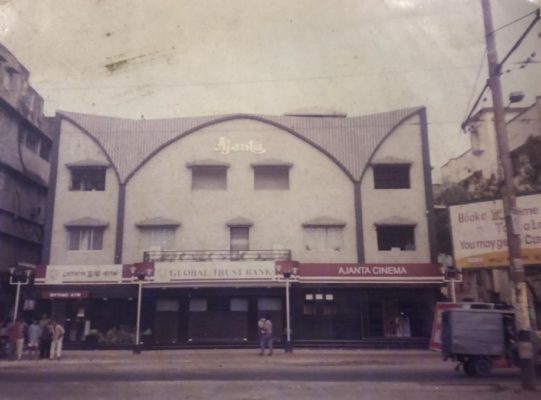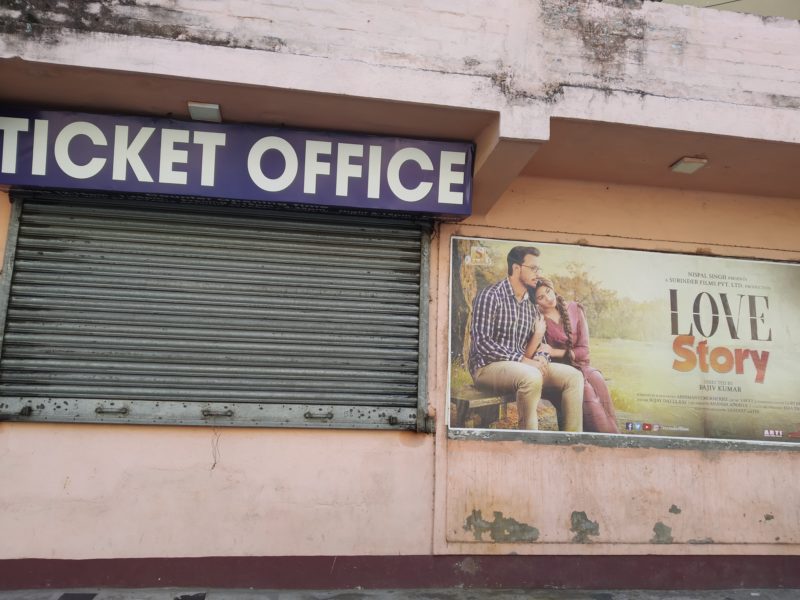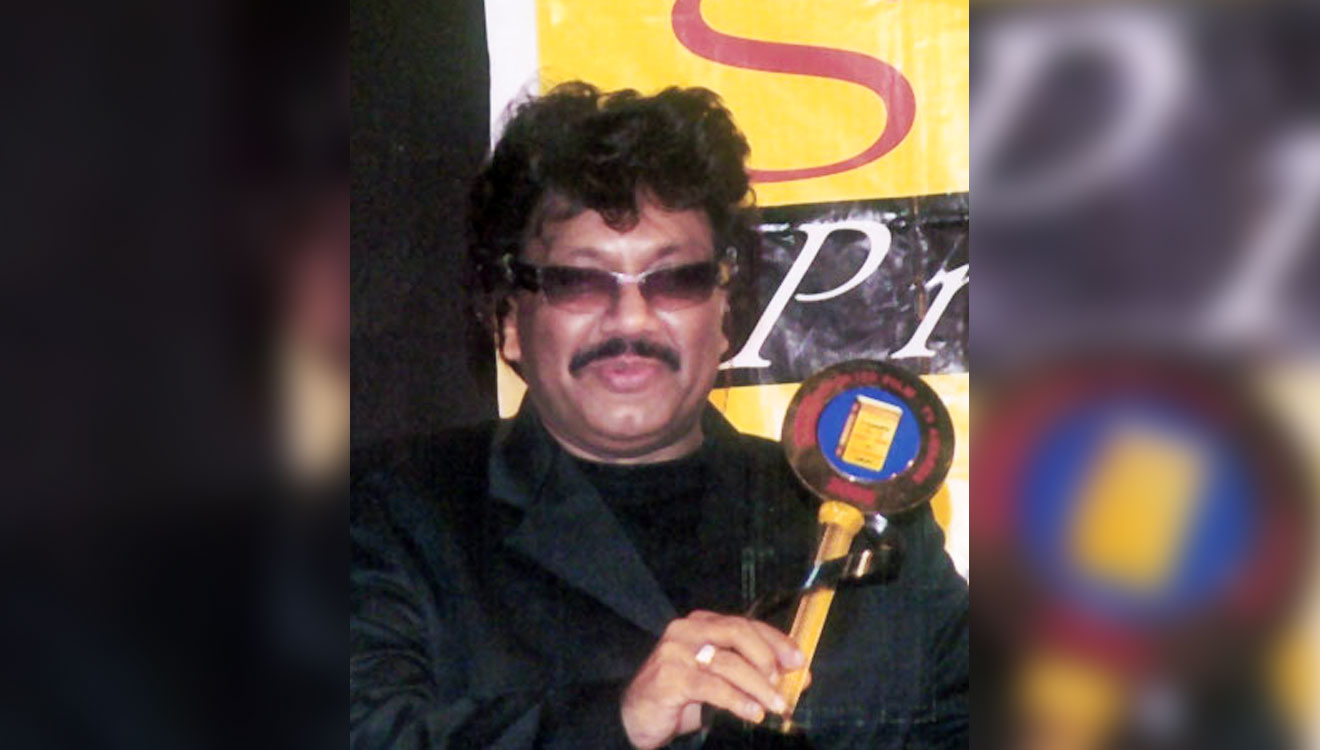Seven months ago, Arti Cinemas in Baguiati area of Kolkata would see a queue, albeit short, waiting to purchase tickets for the latest films. Today, there is nobody except staff members waiting around idly in corners. Dog-eared, torn posters of films, which released back in February and March, still flap gently. The halls that would once roar with laughter and applause, have now fallen silent, lament employees.
Covid-19 has been ruthless for professionals in various fields. Single-screen theatre owners say that they have been hit hard by the pandemic. At least 15 theatres across West Bengal have pulled down their shutters permanently due to Covid-19.
Some others, who chose to open shop after the West Bengal government permitted cinema halls to reopen in October, say that they might close their theatres again.
Drop in numbers
According to the Film Federation of India, there are 330 single screen theatres in West Bengal. Rubbishing the figures, owner of Behala’s Ajanta Cinema Satadeep Saha says that before the lockdown, there were around 200 single screen theatres in the state and most of them were already struggling to survive.
While Ajanta Cinemas and Priya Cinema, in Rashbehari Avenue, had decided to open in October, in time for the Pujo releases, Priya Cinema owner Arijit Dutta says that there has been no business.
A week after Durga Puja, Dutta decided to close down both his single screen theatre and another multiplex that he runs. He has 27 employees working at Priya Cinema. While he has been paying their salary, he says that it will be difficult to sustain it.
“We are paying all the expenses until our bank balances are empty. When we reopen, there’s an opening cost and we are unable to carry it,” says Dutta.
Calling this as a disastrous week, distributor for 12 single screens Ajoy Bakliwal says: “Shironaam’s (a Durga Puja release directed by Indranil Ghosh) total earning from the week was Rs 14,000. This was from the seven shows running at Priya Cinema. The total at Ajanta Cinema was Rs 25,000.”
Theatre owners who have chosen not to reopen cinema halls say that they are happy in retrospect. Sunit Bobby Singh, owner of Paradise Cinema hall at Esplanade, says that he chose not to reopen because there were no new Hindi releases.
“I am glad I did not open. Look at the theatres that opened up and are now closing down temporarily,” he says.
Recommended
The only single screen theatre in Durgapur in West Burdwan district- Durgapur Cinema- has been closed for more than seven months now. Despite stiff competition from the multiplexes, Durgapur Cinema had earlier managed to stand strong with the cheapest ticket ranging between Rs 40 to Rs 60. The glory days, however, are gone, says staff member Biswajit Chattaraj. He adds that the staff are yet to get their salaries and most of them have found other jobs.
Gradual losses
When West Bengal fist welcomed multiplexes in the early 2000s, most single screen theatres had to reinvent themselves to survive and eventually had to close down. Many standalone theatres, without facilities like parking, could not survive.
Although many attempted to make structural changes to their theatres, the costs of renovation and maintenance were quite high. The minimum expenditure to convert a single screen to a multiplex is expected to cost Rs 4 crore, says Paradise Cinema’s Singh. Well known standalone theatres, like Orient, Metro and Globe and 10 others in Central Kolkata, have all shut shop, he adds.
“When multiplexes came in, there were only one or two (theatres closing down), by 2010, the number had tripled. Now even multiplexes are not doing well. Cinema has become more of a weekend affair unless there’s a big movie release. The multiplexes make up for the losses through their food sales. A ticket costs Rs 200, while a bucket of popcorn costs Rs 300 there. In a single screen theatre, selling such expensive popcorn is out of the question, no one will buy it,” he says.

Capacity
Paradise Cinema used to run with over 80% capacity having 1,200 seats. Now, most single screen theatre owners have reduced capacity to 280-350 seats.
It is nearly impossible to get large bookings too, say most owners.
“The drop in the number of single screens is not a special phenomenon in Bengal, it’s happening all over the country,” says Priya Cinema’s Dutta.
In cities like Patna, where there are not many multiplexes, standalone theatres have managed to survive. However, in Bengal, the number of multiplexes have multiplied. To keep up with them, many single screens have converted to dual screens.
Although the state government has offered financial help through schemes to theatre owners, Dutta feels betrayed.
“Adequate attention or sympathy has never been given to the theatre owners, who have been paying taxes for the last 60 years. We feel that more freedom and ease of doing business has been given to the new entrances (multiplex chains),” he says.

What does the future hold?
“The future is multiplexes, which is in a good, proper mall. The screen size will go down and there will be a maximum of 220 seats. Single screens will not be able to survive in India for more than three years,” says Singh.
Raj Kumar Chhetri, co-owner of Asha Video Hall in Hasimara in Alipurduar district, says that the empty theatres remind him of a different time.
“People would gather in front of our pastel-coloured, massive halls. Theatre owners used to have an emergency alarm handy. If it was Shahrukh Khan or Salman Khan movie, then cops would be alerted in advance to keep the crowd in control. Those were the days,” he says.
Singh says that it seems unreal when fights would break out at the ticket counter. He wonders whether he will ever witness something similar again.



